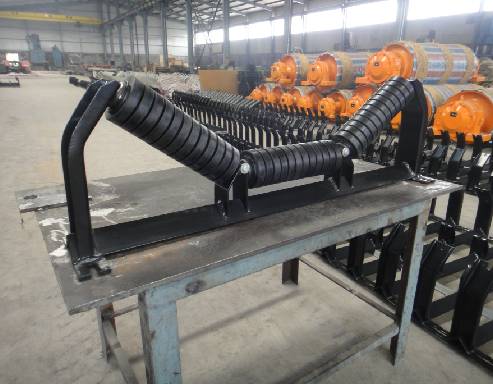 Afrikaans
Afrikaans  Albanian
Albanian  Amharic
Amharic  Arabic
Arabic  Armenian
Armenian  Azerbaijani
Azerbaijani  Basque
Basque  Belarusian
Belarusian  Bengali
Bengali  Bosnian
Bosnian  Bulgarian
Bulgarian  Catalan
Catalan  Cebuano
Cebuano  Corsican
Corsican  Croatian
Croatian  Czech
Czech  Danish
Danish  Dutch
Dutch  English
English  Esperanto
Esperanto  Estonian
Estonian  Finnish
Finnish  French
French  Frisian
Frisian  Galician
Galician  Georgian
Georgian  German
German  Greek
Greek  Gujarati
Gujarati  Haitian Creole
Haitian Creole  hausa
hausa  hawaiian
hawaiian  Hebrew
Hebrew  Hindi
Hindi  Miao
Miao  Hungarian
Hungarian  Icelandic
Icelandic  igbo
igbo  Indonesian
Indonesian  irish
irish  Italian
Italian  Japanese
Japanese  Javanese
Javanese  Kannada
Kannada  kazakh
kazakh  Khmer
Khmer  Rwandese
Rwandese  Korean
Korean  Kurdish
Kurdish  Kyrgyz
Kyrgyz  Lao
Lao  Latin
Latin  Latvian
Latvian  Lithuanian
Lithuanian  Luxembourgish
Luxembourgish  Macedonian
Macedonian  Malgashi
Malgashi  Malay
Malay  Malayalam
Malayalam  Maltese
Maltese  Maori
Maori  Marathi
Marathi  Mongolian
Mongolian  Myanmar
Myanmar  Nepali
Nepali  Norwegian
Norwegian  Norwegian
Norwegian  Occitan
Occitan  Pashto
Pashto  Persian
Persian  Polish
Polish  Portuguese
Portuguese  Punjabi
Punjabi  Romanian
Romanian  Russian
Russian  Samoan
Samoan  Scottish Gaelic
Scottish Gaelic  Serbian
Serbian  Sesotho
Sesotho  Shona
Shona  Sindhi
Sindhi  Sinhala
Sinhala  Slovak
Slovak  Slovenian
Slovenian  Somali
Somali  Spanish
Spanish  Sundanese
Sundanese  Swahili
Swahili  Swedish
Swedish  Tagalog
Tagalog  Tajik
Tajik  Tamil
Tamil  Tatar
Tatar  Telugu
Telugu  Thai
Thai  Turkish
Turkish  Turkmen
Turkmen  Ukrainian
Ukrainian  Urdu
Urdu  Uighur
Uighur  Uzbek
Uzbek  Vietnamese
Vietnamese  Welsh
Welsh  Bantu
Bantu  Yiddish
Yiddish  Yoruba
Yoruba  Zulu
Zulu drum pulley rubber lagging
The Importance of Drum Pulley Rubber Lagging in Conveyor Systems
In the realm of industrial operations, conveyor systems play a vital role in transporting materials across various production lines. One crucial component that enhances the performance and longevity of these conveyor systems is the drum pulley, particularly when equipped with rubber lagging. This article explores the significance of rubber lagging on drum pulleys and its impact on operational efficiency.
What is Drum Pulley Rubber Lagging?
Drum pulley rubber lagging refers to the rubber coating applied to the surface of a pulley drum in a conveyor setup. This layer serves multiple purposes, primarily aimed at improving the pulley’s grip on the conveyor belt. The lagging is typically made from durable materials, designed to withstand harsh environmental conditions while providing the necessary friction to prevent slippage.
Benefits of Rubber Lagging
1. Enhanced Traction One of the primary advantages of rubber lagging is its ability to improve the traction between the drum and the conveyor belt. This enhanced grip ensures that materials are moved effectively without the risk of belt slippage, particularly during heavy loads or inclined operations.
2. Reduction of Wear and Tear Conveyor systems are subject to significant wear and tear, and drum pulleys are no exception. Rubber lagging acts as a protective layer, reducing direct contact between the pulley surface and the conveyor belt. This minimizes the degradation of both components, ultimately lowering maintenance costs and extending the lifespan of the equipment.
drum pulley rubber lagging

3. Improved Noise Reduction Operations in industrial settings can often be noisy, creating an uncomfortable work environment. Rubber lagging helps to dampen vibrations and sounds generated during the conveyor's operation, contributing to a quieter workplace.
4. Abrasion Resistance The effective application of rubber lagging offers resistance to abrasions caused by material handling. This characteristic is particularly important in industries where rough materials, such as gravel or ores, are transported, as it prevents premature wear on the pulleys.
5. Stability at Higher Speeds Conveyor systems are frequently operated at varying speeds. Rubber lagging provides added stability during high-speed operations, mitigating the risk of the belt slipping and ensuring smooth and efficient material transfer.
Installation and Maintenance
Installing rubber lagging on drum pulleys requires careful consideration to ensure optimal performance. Proper alignment and tensioning of the conveyor belt must be maintained throughout the installation process. Additionally, routine inspections are essential to check for signs of wear or damage to the lagging, ensuring that the conveyor system remains operational and efficient.
Conclusion
In conclusion, drum pulley rubber lagging is an essential component in the optimization of conveyor systems across various industries. Its benefits—ranging from enhanced traction and reduced wear to improved noise reduction—underscore its importance in maintaining efficient operations. By investing in quality rubber lagging for drum pulleys, organizations can significantly enhance their productivity while ensuring the longevity of their equipment. As industrial operations continue to evolve, the role of such technological enhancements remains crucial in achieving operational excellence.
-
Revolutionizing Conveyor Reliability with Advanced Rubber Lagging PulleysNewsJul.22,2025
-
Powering Precision and Durability with Expert Manufacturers of Conveyor ComponentsNewsJul.22,2025
-
Optimizing Conveyor Systems with Advanced Conveyor AccessoriesNewsJul.22,2025
-
Maximize Conveyor Efficiency with Quality Conveyor Idler PulleysNewsJul.22,2025
-
Future-Proof Your Conveyor System with High-Performance Polyurethane RollerNewsJul.22,2025
-
Driving Efficiency Forward with Quality Idlers and RollersNewsJul.22,2025





























